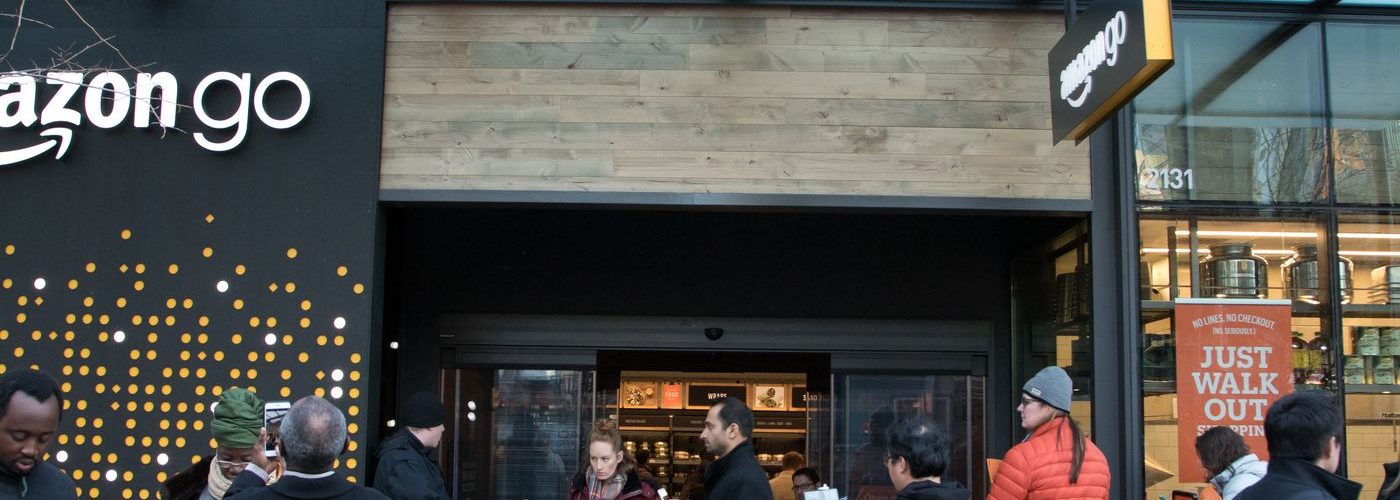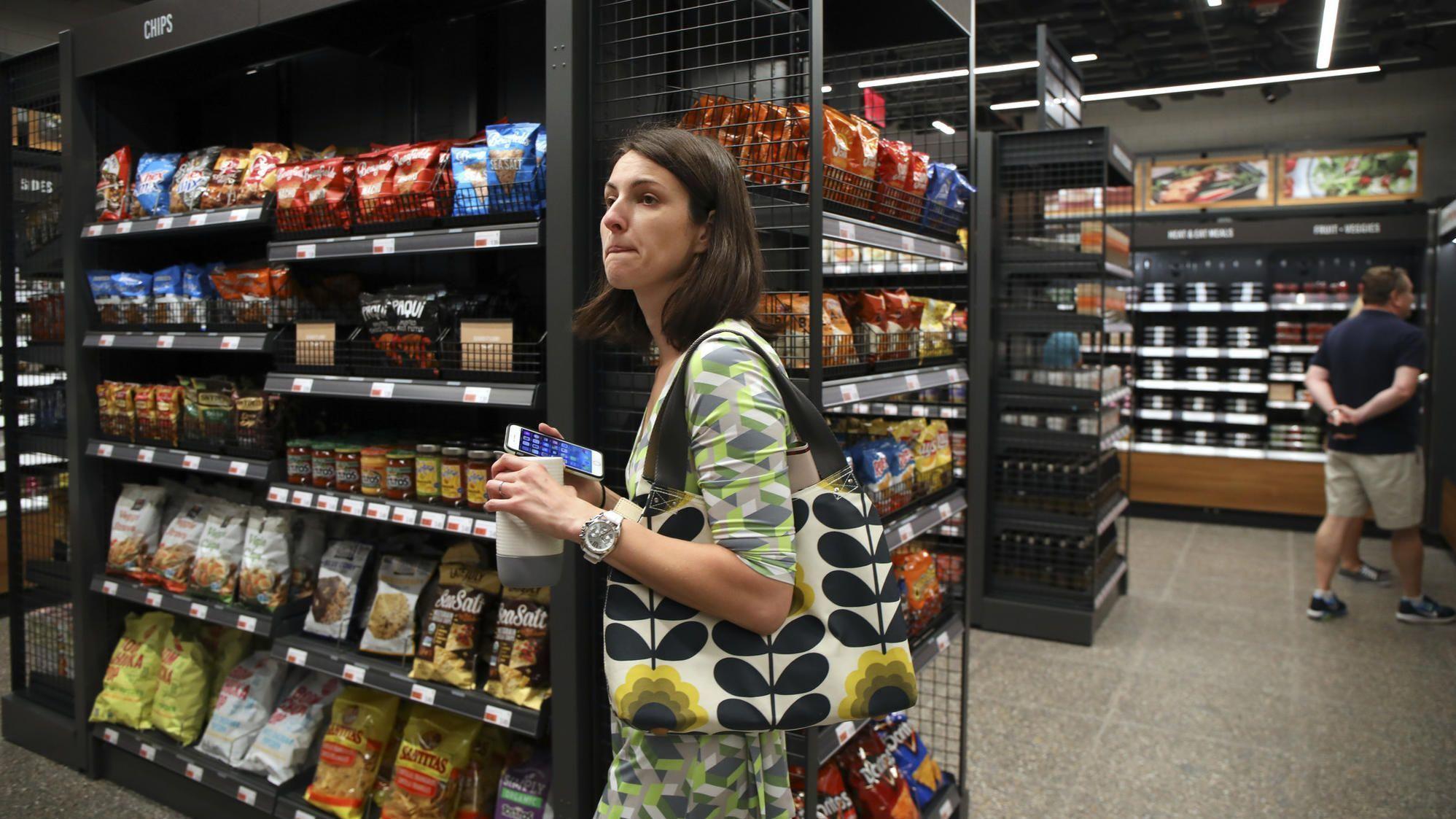The Amazon Go store, which opened on Sept. 17, 2018, in Chicago’s Loop neighborhood, is the company’s first store outside of Seattle. (Stacey Wescott/Chicago Tribune)
By Lauren Zumbach
Chicago Tribune
September 17, 2018
Amazon’s cashierless stores are designed to spare time-crunched shoppers from waiting in the checkout line.
But when Chicago’s first Amazon Go store opened Monday morning, most shoppers were taking their time to browse the selection of grab-and-go food items and get used to the idea of picking up their purchases and leaving without formally paying.
“It felt a little weird, but I like the concept,” Bill Termunde, 32, of Chicago’s Beverly neighborhood, said between bites of a breakfast sandwich he’d bought, along with three Clif bars.
The e-commerce giant spent more than a year testing the cashierless convenience store concept with employees near company headquarters before opening the first Amazon Go to the public in January in Seattle. The 2,000-square-foot Chicago store — the company’s fourth and the first outside its hometown — will be open from 7 a.m. to 8 p.m. weekdays at 113 S. Franklin St., on the first floor of the complex where Amazon’s Chicago office is located.
Customers must scan an app on their smartphone on the way in to let the store know they’ve arrived. Cameras and other sensors track shoppers as they browse and add items to a virtual cart as customers take them off shelves.
Amazon automatically charges customers’ accounts when they leave. A sign on the wall calls it “just walk out shopping.”
Critics fear the technology is an attempt to run stores with fewer employees. Gianna Puerini, vice president of Amazon Go, said getting rid of traditional checkout wasn’t about eliminating workers, but rather getting rid of part of the bricks-and-mortar shopping experience most customers wouldn’t miss — particularly the busy professionals working near its store in the Loop.
“I don’t know a ton of people who say, ‘I love the part where I wait in line and they ring up all my stuff,’ ” she said.
READ MORE: Amazon Go has shown us the future of retail — and in it, we’re broke and unhealthy. Here’s the fix. »
While there are no checkout lines at the store, there was a line of customers out the door and down the block waiting to get in Monday during the lunch rush.
Puerini declined to say how many people the store employs, but she said Amazon Go still needs workers to take deliveries, stock shelves and help customers.
On Monday morning, orange-shirted Amazon Go employees at times outnumbered customers. Several stationed near the door helped shoppers download the store’s app, reassured those who hesitated before leaving that they really could just walk out and showed customers where to find their receipts to verify they had been charged for the right items.
Amazon Go carries the kinds of pre-made sandwiches, salads and snacks you might find at a grocery store, along with packaged convenience store fare. Some fresh items, delivered daily, are made by Amazon off-site and some are prepared by local companies like Fairgrounds, Farmer’s Fridge and I Love Sweets.
There is no hot prepared food, in part because of the focus on eliminating lines, but there are ready-to-heat items and two microwaves on-site. There’s also a section with two-person meal kits designed to be prepared in about 30 minutes, aimed at people who want to pick up dinner on the way home from the office.
Branden Laxner, 31, of River North, said he liked the focus on keeping trips quick. Laxner, who works in the building where the Amazon Go store is located, said he usually isn’t looking to browse and knows what he wants in advance. On Monday, that was a bottle of cold-brew coffee and a protein bar.
“I know there’s implications on the labor side, but sometimes you just want to get in and get out without having someone looking over your shoulder,” he said.
But to eliminate the checkout line, the store does rely on a network of cameras keeping an eye on customers and store shelves. The cameras, in black boxes along the ceiling, work with sensors on the shelves to determine which items belong in which shoppers’ carts.












